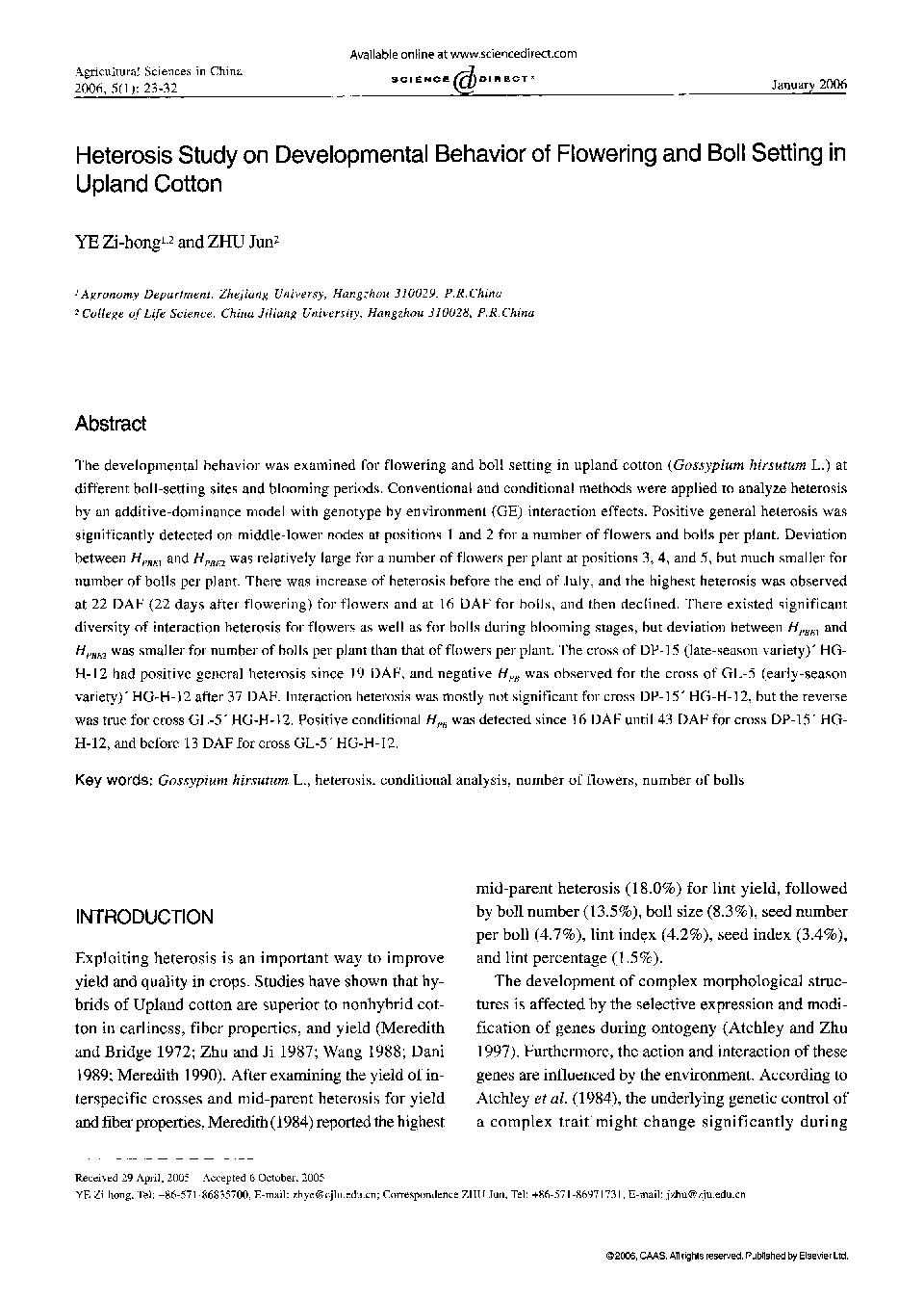| Article ID | Journal | Published Year | Pages | File Type |
|---|---|---|---|---|
| 4491077 | Agricultural Sciences in China | 2006 | 10 Pages |
The developmental behavior was examined for flowering and boll setting in upland cotton (Gossypium hirsutum L.) at different boll-setting sites and blooming periods. Conventional and conditional methods were applied to analyze heterosis by an additive-dominance model with genotype by environment (GE) interaction effects. Positive general heterosis was significantly detected on middle-lower nodes at positions 1 and 2 for a number of flowers and bolls per plant. Deviation between HPBE1 and HPBE2 was relatively large for a number of flowers per plant at positions 3, 4, and 5, but much smaller for number of bolls per plant. There was increase of heterosis before the end of July, and the highest heterosis was observed at 22 DAF (22 days after flowering) for flowers and at 16 DAF for bolls, and then declined. There existed significant diversity of interaction heterosis for flowers as well as for bolls during blooming stages, but deviation between HPBE1 and HPBE2 was smaller for number of bolls per plant than that of flowers per plant. The cross of DP-15 (late-season variety)′ HG-H-12 had positive general heterosis since 19 DAF, and negative HPB was observed for the cross of GL-5 (early-season variety)′ HG-H-12 after 37 DAF. Interaction heterosis was mostly not significant for cross DP-15′ HG-H-12, but the reverse was true for cross GL-5′ HG-H-12. Positive conditional HPB was detected since 16 DAF until 43 DAF for cross DP-15′ HG-H-12, and before 13 DAF for cross GL-5′ HG-H-12.
